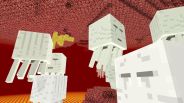For Chileans who live in the Atacama Desert, the Earth's driest desert, getting potable drinking water is a stroke of luck. Drought is a major concern for cities there, which survive on prehistoric underground aquifers.
The rainfall of less than 0.04 inches yearly makes it harder to find water. Fortunately, a group of international scientists came up with a that can collect water to produce clean water: fog harvesting.
What is Fog Harvesting and How Does It Work?
According to Gizmodo, a group of researchers in Chile decided to see the potential of fog harvesting in Chile's Alto Hospicio, a rapidly developing urban community where close to 10,000 residents exist without access to a fixed water supply. The idea is surprisingly straightforward:
- Fine mesh nets are hung between two poles.
- Atmospheric moisture condenses on the mesh, creating water droplets.
- The harvested droplets run into a gutter and are stored in a water tank.
Unlike other conventional water sources, this water-harvesting technique uses no electricity and is passive, thus an eco-friendly and cost-saving method of water provision for communities in acute drought conditions.
Read more: Scientists Create Armor-Like Polymer That's Stronger Than Steel But as Flexible as Fabric
How Much Water Can Fog Provide?
From the study posted in Frontiers in Environmental Science, 38.61 square miles (100 square kilometers) of fog collectors produced between 0.05 and 1.32 gallons (0.2 to 5 liters) of water per square meter per day.
Peak months for fog collection—August and September—resulted in up to 2.64 gallons (10 liters) per square meter per day. These findings show that fog collection may be an available source of water, especially during seasonal periods of high fog frequency.
Redesigning Urban Water Supply with Fog Collection
This research represents a paradigm shift in understanding fog water harvesting. Historically regarded as a small-scale, rural technology, researchers now suggest it as an alternative resource for desert cities like Alto Hospicio.
Potential applications include:
- Water supply for desert city public green areas.
- Irrigation for soilless farming, able to yield 44 pounds (20 kilograms) of leafy greens per month.
- Scaling up to address weekly water requirements of informal settlements.
Limitations of Large-Scale Implementation of Fog Harvesting
Though fog harvesting is a promising opportunity, researchers admit some limitations. First, the location is important since this is where the researchers will get the best possible data even in the most remote high-altitude regions.
It's also important to consider the seasonal fluctuation. Since each season yields different levels of fog, it cannot be an exclusive source of water but rather an add-on solution.
Lastly, the wind and terrain needs should also be put into consideration. Successful fog collection relies on the density of the fog, wind direction, and high ground, so location is important.
Despite these difficulties, researchers hope that their research will encourage policymakers to incorporate fog harvesting into national water plans.
With climate change and urbanization putting more pressure on water scarcity, alternative sources of water such as fog collection can contribute to making cities more resilient and enhancing access to clean, sustainable water.
In 2023, researchers at ETH Zurich found a way to convert fog into drinkable water for the population lacking access to sanitation facilities, as well as impoverished communities.
Related Article: This New Gel Device Can Transform Hot Summer Air Into Drinking Water
ⓒ 2025 TECHTIMES.com All rights reserved. Do not reproduce without permission.





